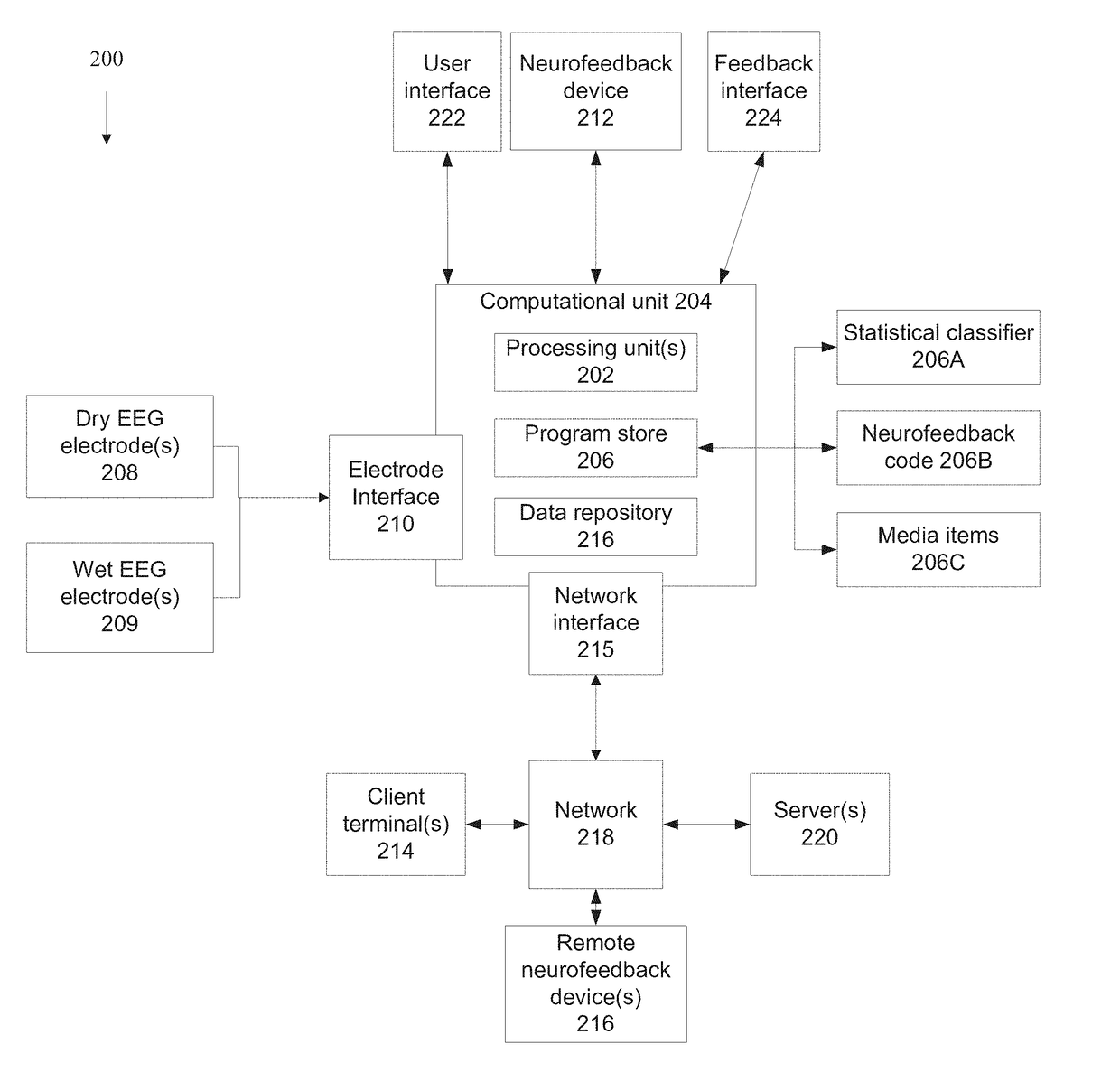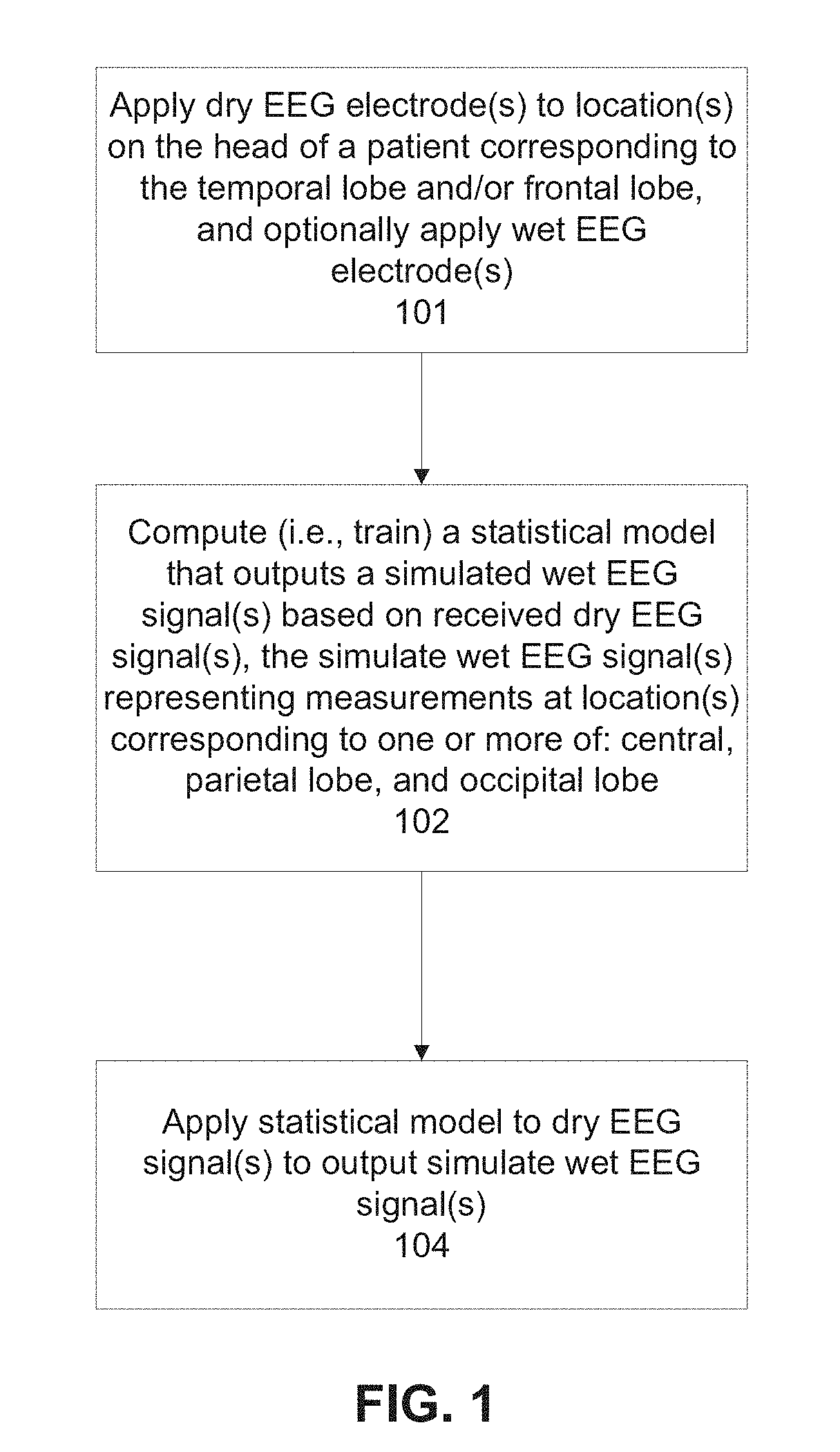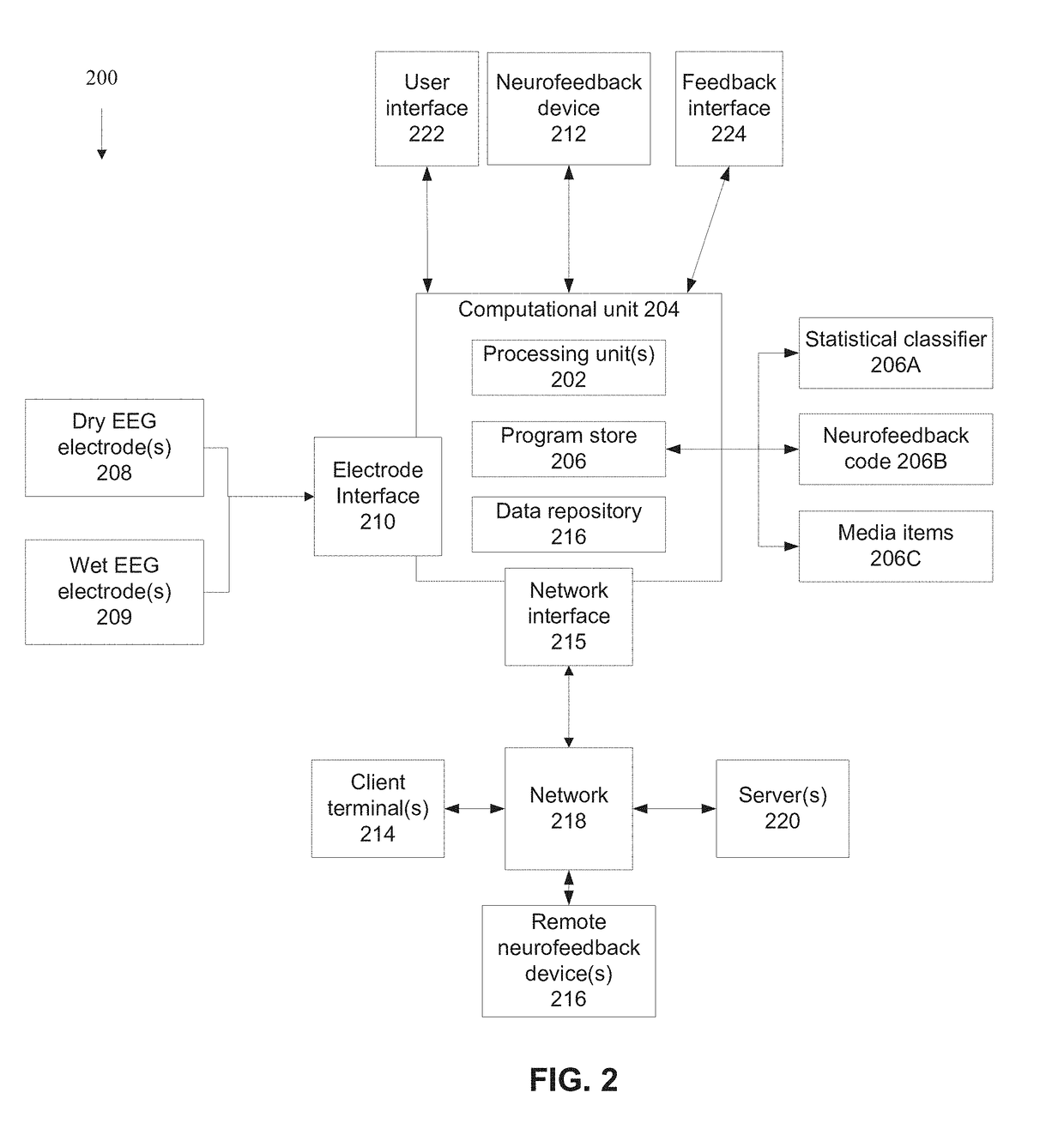Systems and methods for processing eeg signals of a neurofeedback protocol
a neurofeedback and electroencephalogram technology, applied in the field of neurofeedback, can solve problems such as negative feedback, and achieve the effects of improving performance, improving accuracy of feedback, and improving performan
- Summary
- Abstract
- Description
- Claims
- Application Information
AI Technical Summary
Benefits of technology
Problems solved by technology
Method used
Image
Examples
Embodiment Construction
[0042]The present invention, in some embodiments thereof, relates to neurofeedback and, more specifically, but not exclusively, to systems and methods for processing electroencephalogram (EEG) signals of a neurofeedback treatment.
[0043]An aspect of some embodiments of the present invention relates to systems and / or methods (e.g., code instructions stored in a storage device executed by one or more processors) that compute a simulated wet EEG signal(s) (denoting EEG signals measured using conductive gel) from one or more dry EEG signals (measured without using conductive gel). The simulated wet EEG signal(s) is used to control feedback during a neurofeedback treatment, for example, to adjust image(s) and / or sound to provide positive or negative feedback. The dry EEG signals are obtained by dry EEG electrodes positioned on the head (e.g. scalp, forehead, temple) of the patient at locations corresponding to the temporal and / or frontal lobe, for example, at one or more of the following ...
PUM
 Login to View More
Login to View More Abstract
Description
Claims
Application Information
 Login to View More
Login to View More - R&D
- Intellectual Property
- Life Sciences
- Materials
- Tech Scout
- Unparalleled Data Quality
- Higher Quality Content
- 60% Fewer Hallucinations
Browse by: Latest US Patents, China's latest patents, Technical Efficacy Thesaurus, Application Domain, Technology Topic, Popular Technical Reports.
© 2025 PatSnap. All rights reserved.Legal|Privacy policy|Modern Slavery Act Transparency Statement|Sitemap|About US| Contact US: help@patsnap.com



